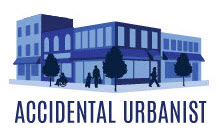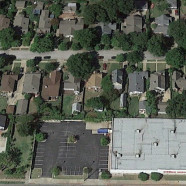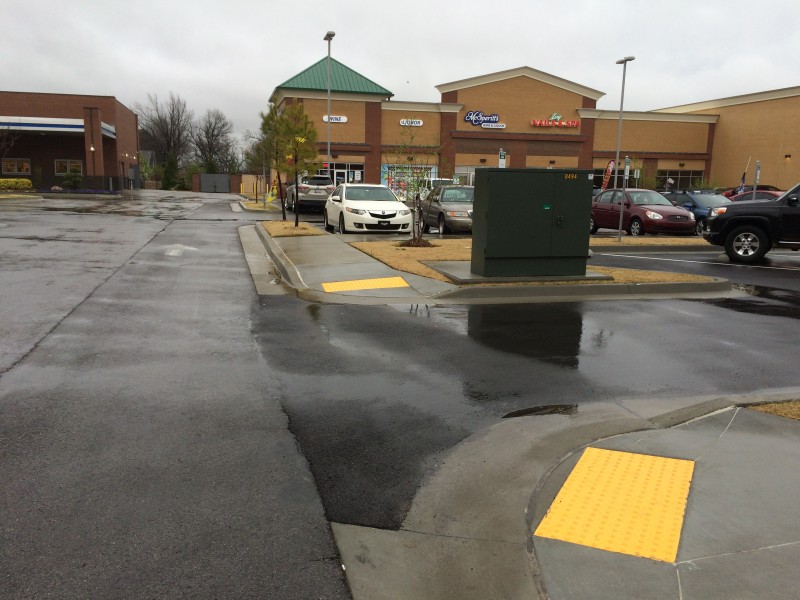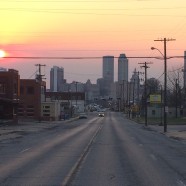Stop Shoehorning Suburbia into Walkable Places
It’s pretty easy to destroy a walkable place. We’ve been doing it for so long, it’s almost second nature. First, prioritize auto travel. Require every new building to be surrounded by lots of parking, and require every new street to be designed for high-volume, fast-moving traffic. Second, designate separate areas for people to live, work and shop, and don’t allow any of these “uses” to mingle. Third…. Well, actually, the first two will do it.
I could go on. We could talk about over-zealous fire marshals, outdated subdivision regulations that recommend cul-de-sacs instead of connected streets, federal policies that prioritize single-family suburban homes over mixed-use buildings, and inadequate transit systems. We could certainly talk about redlined neighborhoods, the Interstate Highway Act, and urban “renewal”—policies that transformed American cities like the Allied bombers transformed Dresden.
But let’s keep it simple. Over decades—one parcel and one building at a time—we have created new places where it’s virtually impossible to survive without a car, while systematically chipping away at the older places that used to be fully functioning, walkable, high-yield neighborhoods. Little by little, these once thriving areas have been degraded until they no longer work for people on foot.
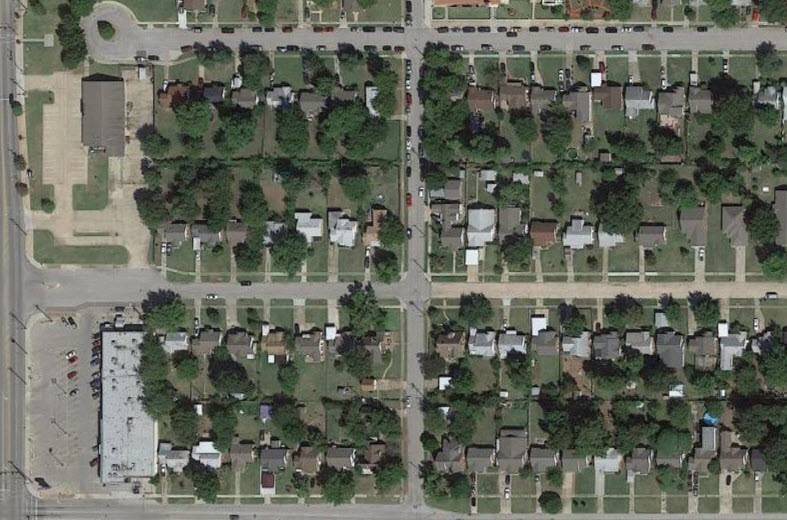
Cul-de-sacs, drive-thrus and surface parking lots are NOT what this neighborhood needs. Photo: Google Maps
OK, so mistakes were made, as the politicians like to say.
I can almost forgive the mistakes of the past. (Not the racist ones. The more I learn about the history of federal housing policy, the more it makes my head explode. I also retroactively hate everyone responsible for demolishing architectural treasures because someone wanted more parking or a building made of precast concrete. For the perpetrators of these crimes, I’m going to hold a grudge.)
But I really do believe that most people had good intentions and acted in good faith. I’m sure that for the past 70 years, most civil engineers, city planners and members of local planning commissions thought they were doing the right thing to make their cities better. All that “shiny and new” stuff probably looked pretty good at the time.
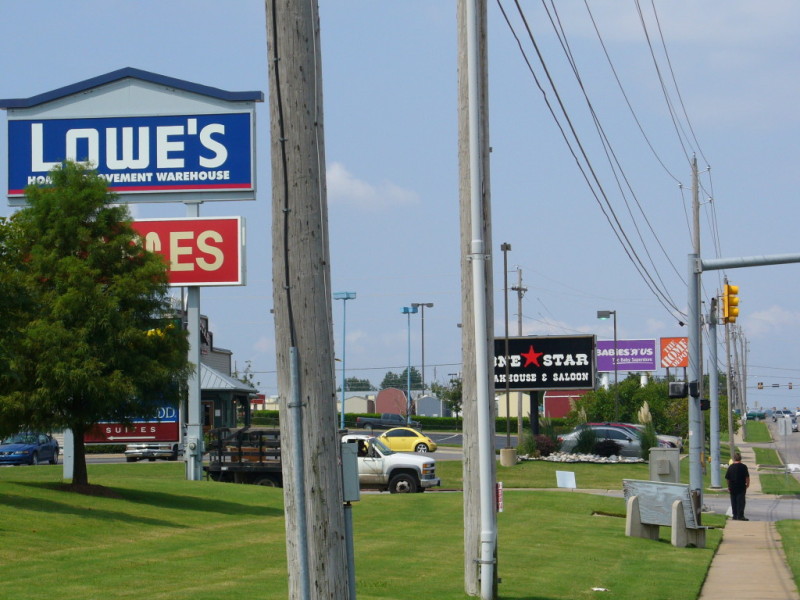
In hindsight, maybe this wasn’t such a great idea. Photo by Sarah Kobos
Fine. We’ll add suburban sprawl to the long list of humanity’s mistakes that occurred during the latter half of the 20th Century. Like feathered bangs, the Ford Pinto, or any tattoo you got before the age of 35, sometimes we err, not because of malice, but from an understandable combination of ignorance and exuberance.
The thing that really drives me crazy is the present. Now, we know better. We recognize the economic, human health, and environmental benefits of traditional building patterns. And yet, there is so much inertia built into the system, we just keep building car-centric crap like it was 1985.
Here’s the conundrum: it’s incredibly hard to insert walkable places into a car-centric landscape. In areas defined by fast traffic, wide streets, large lots, single-use zoning, and inhospitable asphalt blast furnaces, you can’t just build a nice storefront up by the street and expect it to succeed. Your otherwise perfect design will fail as a walkable place because of everything that surrounds it. You can’t grow a fern on a sand dune in the Sahara.
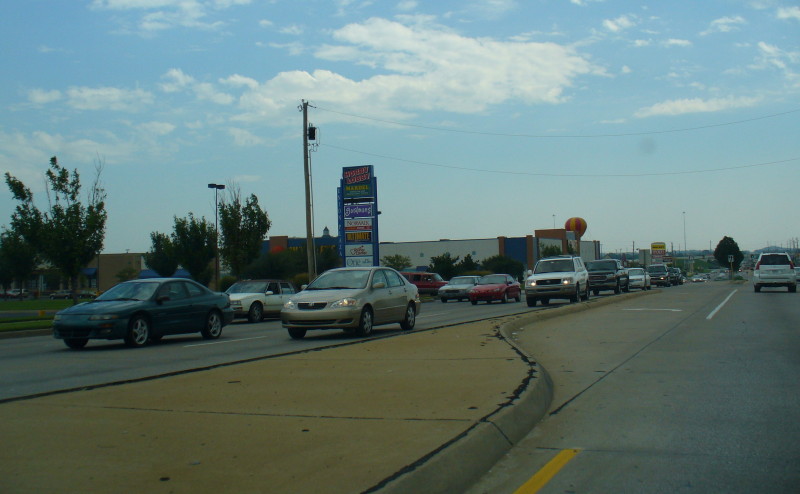
Go ahead, I dare you. Just try to build something walkable here.
But you can all too easily insert a car-centric development into a walkable area with no negative consequences (to you). Your single-use, suburban-style development will function as designed—for people in cars—operating independently from everything around it. Meanwhile, that single inappropriate project will degrade everything else in the surrounding ecosystem that makes the place desirable to begin with. It will increase auto traffic while disrupting the urban fabric and acting as a barrier to people on foot.
It’s a hard habit to quit.
In older parts of the city, walkable neighborhoods are being rediscovered and revitalized because they’re interesting, human-scaled, and pleasant. People are drawn to them because they have character, and because it’s nice to be able to walk to dinner or bike to meet friends for coffee. Understandably, the moment a particular neighborhood becomes popular—thanks to its historic buildings and traditional building pattern—it will attract new development. But if you’re not prepared with zoning laws to enhance and support walkability, you’ll get what everyone knows how to build, which is crap for cars.
It doesn’t take much to punish a pedestrian.
A blank wall, a surface parking lot, anything with a drive-thru—these all signify to pedestrians that the walkable area has ended. They are evidence that we’ve left the human realm and are now operating in an auto-only area. Our bodies respond accordingly. Like early explorers who’ve come to the end of the known world, we’re immediately uncomfortable and on guard. Most people will stop and turn around. The built environment warns us: Here be dragons.
Attention everyone: please stop building suburban crap in historic, walkable neighborhoods. Geez! You’ve got the whole rest of the city that’s perfectly designed for that stuff. Quit trying to shoehorn it into old districts where its very presence creates dysfunction for the properties around it.
Unfortunately, this is often what our zoning code requires.
Neighborhoods that were built before the advent of zoning were a mix of residential, commercial and industrial activities. When city planners were later tasked with drawing up zoning maps, they had to pick a single use, so they labeled the existing places where people lived above shops and restaurants as “commercial.”
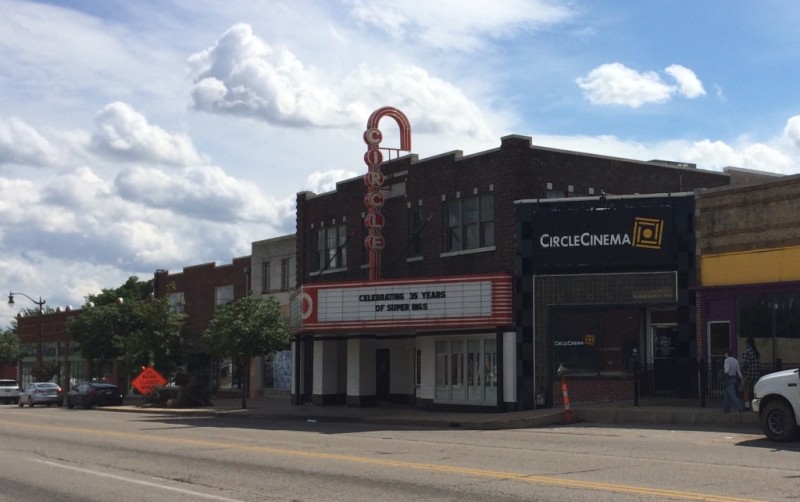
Historic Whittier Square in Tulsa, OK – Photo by Sarah Kobos
Since that time, we have gradually added requirements to our ordinances governing commercial lots. Parking per square foot of building space; percent of landscaping area; maximum floor area ratios; building setbacks, prohibitions against residential uses, and many more. But every one of these requirements was created with car-oriented, suburban-style development in mind. The zoning code didn’t support the old places built for people on foot, and in far too many cities, ordinances and zoning maps have still not been updated to protect these incredibly valuable assets.
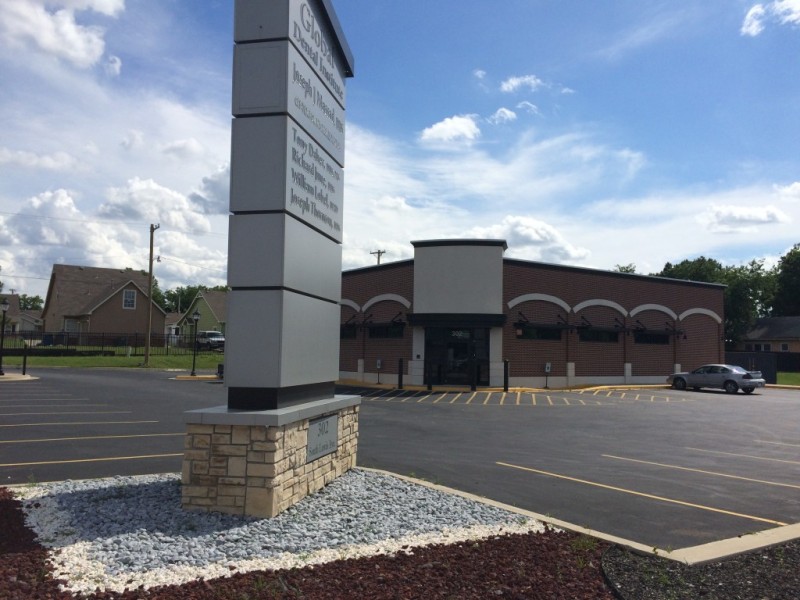
Two blocks south of Whittier Square in Tulsa, OK – Photo by Sarah Kobos
We desperately need more high-quality, walkable places, not only because people love them, but because they are revenue producers for our cash-strapped cities. Traditional building patterns utilize land and resources far more efficiently than car-oriented developments, while generating more tax revenue than they consume in public infrastructure investments.
Our best way forward is to take a step back.
Sprawl repair is complex and expensive. The challenges of transforming car-oriented suburbia into traditional walkable environments are mind-boggling. In modern suburbia, too many cards are stacked against walkability.
Fortunately, many cities are loaded with older, overlooked neighborhoods with the perfect DNA to support walkability. They have good bones, despite decades of neglect and the intrusion of too many auto-centric developments. If you need a clue, just look for places with compact street grids, houses on small lots, alleys, mixed-use streets with traditional storefronts, historic 4-plexes, etc. These are the areas of town with the greatest potential because so much is already right, and small investments can have drastic results.
All we need is the common sense to improve these areas without destroying them.
– By Sarah Kobos
(Originally published by StrongTowns.org on 5/30/17)
Read MoreFind a Place You Love That Needs You
After years of advocating for walkable neighborhoods and preservation of historic buildings, I decided to stop talking about it, and start doing it. So last year, I took the plunge and purchased a little 1915 bungalow fixer-upper near downtown Tulsa. I thought this would be a good way to learn the financial ropes of small development, build relationships with contractors, and hone my property-management skills before moving up to a small 4-plex or mixed-use building sometime in the future. As it turns out, it’s been all of that, and so much more.
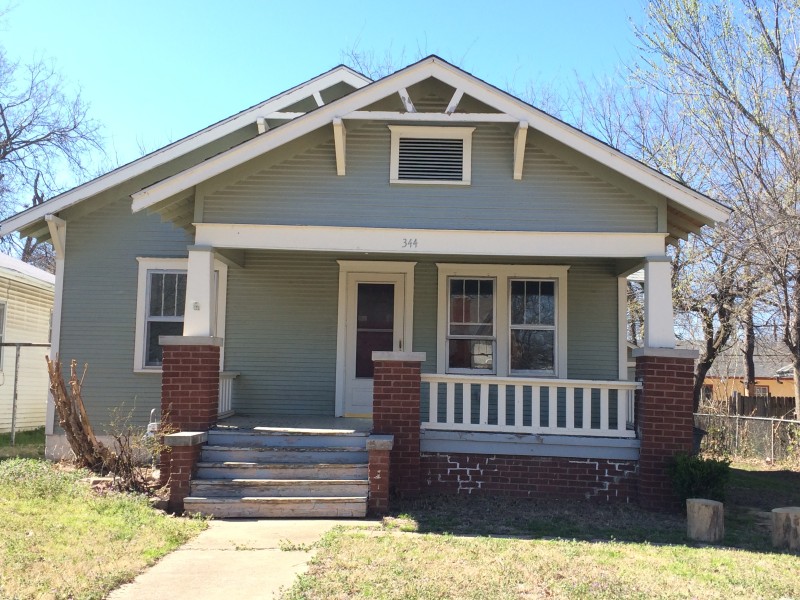
Photo by Sarah Kobos
“Find a place you love that needs you.”
My strategy was to comb older neighborhoods near downtown that need and deserve reinvestment. Basically, I was looking for a place with a compact street grid, alleys, and rundown housing with a couple hipster “indicator species” (brewpubs! yoga!) nearby. So when I saw a house come up in the local sheriff’s auction, I was ready.
Having attended a couple Incremental Development Alliance workshops, I worked up a pro forma based on expected rental income and the cost of improvements, financing, and operating expenses to determine how much I could pay for the house. Then I added about 30% to the renovation budget as a cushion against my own ignorance. The project still “penciled” with room to spare, so I set off to the sheriff’s auction feeling optimistic.
The funny thing is that I didn’t win the auction, but I did get the house.
The only other bidder was a young woman with her daughter by her side. Maybe I was stereotyping, but she looked like so many neighborhood advocates I’ve worked with over the years, it seemed silly to keep bidding against her. We were just making it more expensive for each other. So I stopped a few thousand dollars short of my (very conservative) top price and let her win the auction.
Afterwards, I introduced myself. Within minutes, we bonded over a shared disdain for replacement windows and Home Depot kitchens. She was indeed a preservationist who had renovated several houses in a nearby historic district. Tulsa being Tulsa, we had friends in common. So we exchanged phone numbers, and I left the auction feeling good about the experience, despite “losing” the bid.
A few weeks later, I received a call from her. For various reasons, she and her husband were not going to be able to start renovating the house for several months, and wondered if I would still be interested in it. If so, they would sell the house to me for the price they paid.
Which is how I came to own this little slice of history.
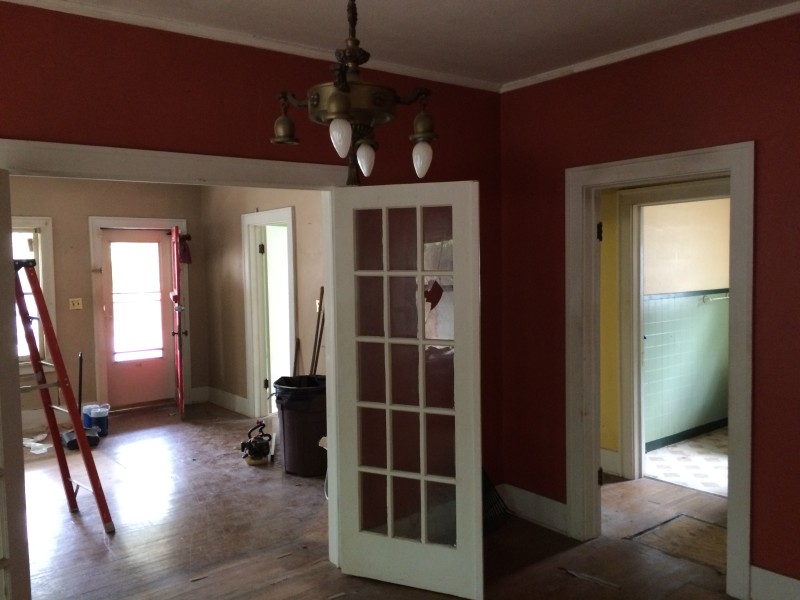
Photo by Sarah Kobos
The house is located on the dodgy end of an up-and-coming neighborhood about a mile east of downtown. Like most “streetcar suburbs” the neighborhood is defined by a compact street grid, houses with front porches on small lots, detached garages, and sidewalks throughout. There are a multitude of classic, if rundown, craftsman bungalows in the area, and everything is conveniently close to a couple historic “main street” districts. Which is to say, the neighborhood has good bones.
It also has pockets of crime and decrepit buildings, thanks to an abundance of slumlords who prey on people with few resources and fewer options.
The house I bought falls smack dab in between the good and the bad. If this street were the Korean Peninsula, my house would be the DMZ. To the south are mostly stable, fairly well-maintained homes with a mix of working-class and retired residents. To the north is slumlord deluxe, with a lot of… shall we say… “entrepreneurial” activities going on.
The house next door has a failing roof, boarded up windows, missing siding, exposed insulation, and an overgrown backyard. I can only assume the landlord is waiting for a good tornado and a sizeable insurance payment before maintenance will begin.
Nearby are a couple rundown 4-plexes, where the owners come by once a week to collect their rent in cash, and remove the front doors when people fail to pay. Door removal appears to be their main skill when it comes to property management. Tenants appear and disappear on a monthly basis, and “friends” come and go with a frequency that implies they’re not there to borrow a cup of sugar.
All this is to say that I’m operating a bit outside my comfort zone. While I’ve done my share of manual labor and blue-collar jobs, I realize that I’m basically a privileged, middle-class, college-educated white woman working in an area where I don’t always understand what’s going on around me. Since I can’t tell a meth addict from a person who lacks dental insurance, my policy is to be polite and respectful to everyone I meet, and hope that folks will return the favor. So far, so good.
Despite all this, I’m excited about the new house. It’s totally intact. Original three-above-one double hung windows with poured glass; original pedestal tub; original doors and fixtures; and oak floors throughout, even in the bathroom and the kitchen. Houses built in 1915 were constructed with lumber from old-growth forests, which means dense, straight wood with unbelievably tight grain. There is simply no way to replicate the quality of materials and craftsmanship that went into the creation of this house.
I remain forever grateful that none of the previous occupants had the desire (or possibly the budget) to ruin it. Had this house been located in a more affluent neighborhood, it would have been gutted. Vinyl windows and particle-board cabinetry from a big box store would have been installed. Light fixtures would have been replaced. Once trendy, now dated, backsplashes would have appeared.
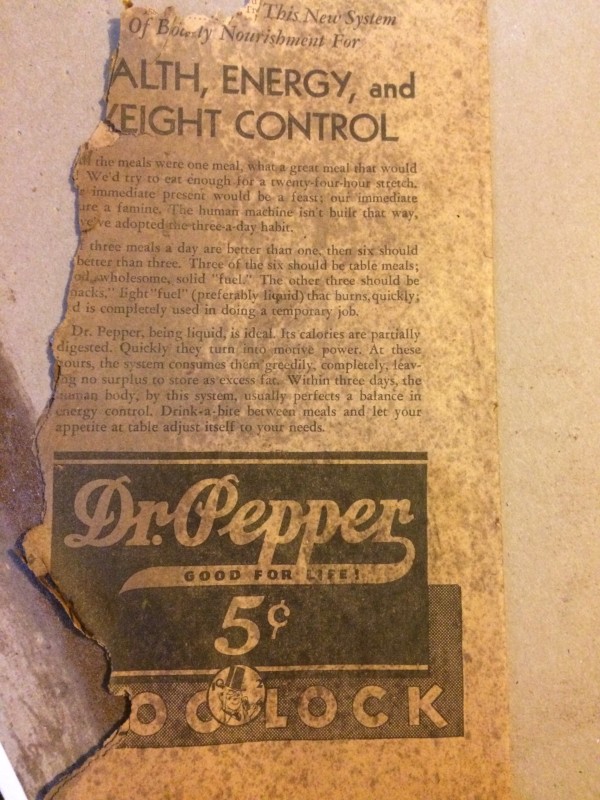
You never know what you’ll find in an old house. – Photo by Sarah Kobos
Old houses and high-quality craftsmanship develop patina over time. They were built to last, and it shows. They age with grace. They can be repaired. My job is to be respectful while I do it.
But there’s more to revitalization than simply fixing up old buildings. A neighborhood is an ecosystem, a quirky human habitat, and when it’s been damaged by generations of neglect, it probably needs help that has nothing to do with repairing roofs and bringing wiring up to code.
The most obvious problems spring from poverty and addiction. From there, it’s an easy spiral down. Folks with few options and a lot of time on their hands are going to get into trouble. Inability to pay lawyers and court fees means more families living on the edge. Criminal records limit job opportunities and housing choices. And concentrated poverty makes it hard to find a way out. When every person you know is in the same lousy circumstances, it’s harder to move up.
In some ways, a little gentrification would be a good thing in this neighborhood. So often people want to work, but there’s no one around to hire them. If I could afford it, I’d hire the whole neighborhood to scrape paint, pour concrete, trim trees and mow lawns. But since I’m living off my savings, I have to do the grunt work myself, and save the paid jobs for licensed professionals.
The whole experience has me thinking about ways to help the people who live nearby. I dream of finding ways to pay people to learn skilled trades. Creating places where you could borrow tools to work on projects or make crafts for sale. Finding ways to help people access the social services they desperately need but may not know are available. Developing policies that would protect people from unhealthy and unsafe slumlord housing and predatory lending.
I don’t have the answers. Right now, I’ve got my hands full just trying to fix up this one old house. Every day I’m humbled…but I’m learning. My project is one small step, and it’s not enough, but it’s a start. It’s just one of a multitude of small actions that will be needed to help make the neighborhood a better place for everyone.
– by Sarah Kobos
(Originally published by Strong Towns on 4/13/17)
Read More